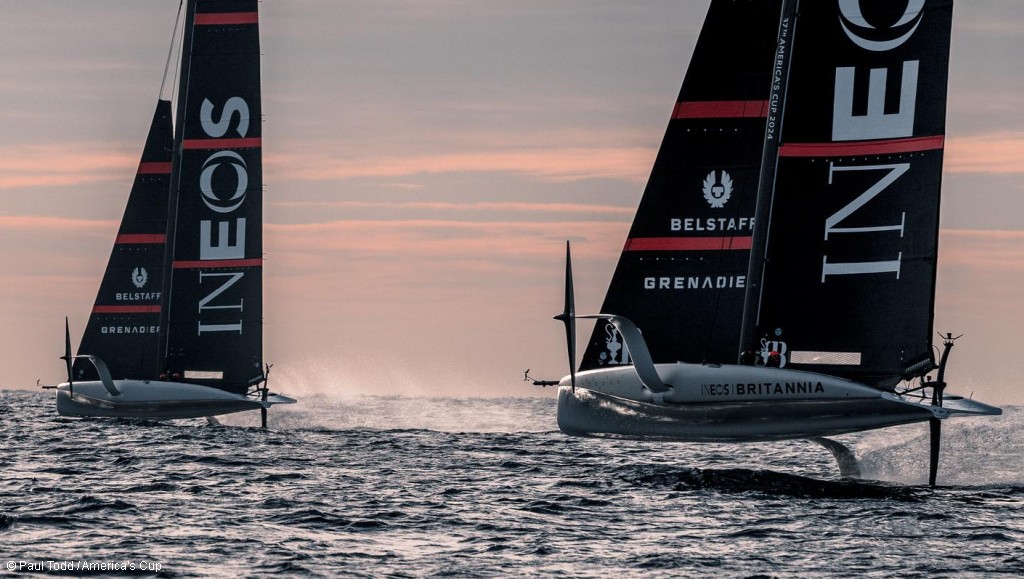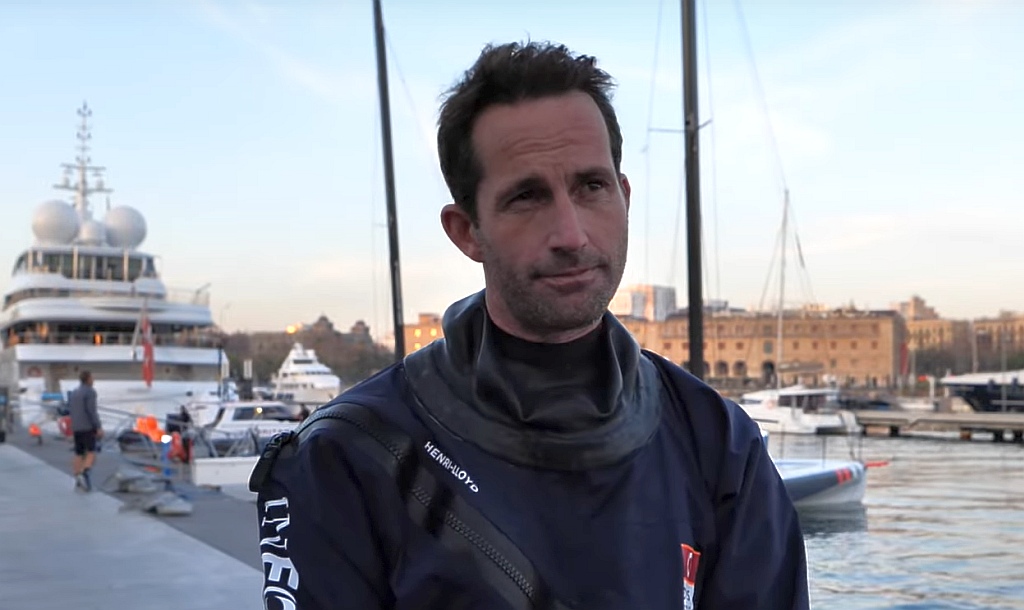Flat water and a light sea-breeze gave INEOS Britannia a perfect blank canvas in Barcelona Thursday to start digging into a conundrum that’s bothered the team since the arrival of their second AC40 for the two-boat race practice programme.
What’s been spotted but not publicly acknowledged until now is the very slight speed differential that the new AC40 (b) has over the AC40 (a) that the team used in the two Preliminary Regattas in 2023.
Four, one-lap, upwind-downwind races were carried out in marginal 5 to 8 knots conditions, with each boat executing three to four tacks and gybes per leg, respectively.
The two boats alternated the starboard and port entries. AC40(b) had a solid performance, starting ahead, rounding the top marks ahead, and winning the four races.
When the the J1s were replaced by a one-design J2 onboard AC40(b) and by the new LEQ12_J2-4 on AC40(a). AC40(b) using the one-design J2 was slightly faster both upwind and downwind, with a greater margin on the downwind.
Both jibs were then lowered and switched. AC40(a) hoisted the one-design J2, while AC40(b) hoisted the new LEQ12_J2-4
On the upwinds AC40(b) continued to seem to have something extra. However, differences were smaller than before switching jibs.
On the downwind and specially on port tack, AC40(a) with the one-design jib was slightly faster.

Ainslie acknowledged the speed issue in interview afterwards saying: “We are seeing a little bit of difference between the boats which is interesting from a one-design class perspective but yeah I think we need more time with this other headsail to figure out how it’s going, we switched it between boats but it’s hard to tell really.”
“We’re trying to figure out what’s causing that difference so we’re lining up the boats and making sure that everything is symmetric in terms of foil arm positions, rig and the systems on the boat to see if there’s any differences there. For us it’s really important to try and figure out what’s making that difference because that will help us understand these boats in general.”
Ben also wryly commented: “I think we’re seeing that ‘Boat B’ is just a click faster than ‘Boat A’ so yeah, I guess I wish we had ‘Boat B’ earlier in the year.”
Speaking about the new J2 headsail, Ben also made a very interesting comment that alluded to perhaps how prized the team might favour manoeuvrability over outright speed in the AC75 in a very tight Challenger Series, as he said:
“It’s also about the functionality of the sails as well. We know here in Barcelona that it’s very variable conditions so you kind of want sails that are going to give you that variability, that ability to adapt to conditions, and mode changes, so there’s maybe more to it than just straight-line speed.”
Interesting period for INEOS Britannia with plenty of learning going on all round and plenty for the Mercedes Applied Science analysts to dig into back at ‘Mission Control’ in Brackley, England.
Crew: AC-2 Athena(a): Dylan Fletcher, Ben Cornish, Leigh McMillan, Bleddyn Mon. AC-10 Sienna(b): Ben Ainslie, Giles Scott, Iain Jensen, Luke Parkinson.
Related Post:
Mission Control we have a problem . . . The advantages of Mission Control for AC37







